Leslie D Monte in Mumbai
Last month was decidedly hectic for N Chandrasekaran, CEO & MD of India's largest IT services provider Tata Consultancy Services, who typically spends 20-23 days on the road primarily to meet clients.
He was criss-crossing India, trying to meet up with as many of the company's over 200,000 global employees as possible.
"I spend around 90 minutes in each location. I first show them a 30-minute video about the goings-on in the company, after which I welcome questions. During these meetings, they (the employees or associates as TCS calls them) ask me just about anything - be it about our customers, the overall economy, future plans, growth, margins, or even media-related questions.
"The meetings are very engaging. There are, of course, some questions that put me on the back foot. In case I don't know the answers, I admit it, and they're OK with it," says Chandrasekaran.
Fondly called 'Chandra', he has these 'town hall' meetings and 'roadshows' not only in India, but across the globe (TCS is present in over 42 countries) every 18 months or so.
Christened the 'CEO Connect', TCS began this exercise immediately after he took charge of the company from S Ramadorai (now vice-chairman of TCS) in late 2009.
...
N Chandrasekaran: The driving force behind TCS
Image: TCS has more than 200,000 employees.This is in addition to the quarterly emails he sends his employees, and other human resources initiatives of the company.
The reason is evident.
In 2005, just a year after it was listed on the Indian bourses, TCS had around 47,000 employees on its rolls.
"Even then, we had no idea of how we would manage so many employees," recalls Chandrasekaran who was then a senior manager in the company.
Six years later, the company's ranks (including its subsidiaries) have swelled to over 200,000 - making it one of India's largest private sector employees.
And Chandrasekaran is now at the helm of a $8.2 billion company as on March 31, 2011 (the entire IT industry's software exports grossed around $7.7 billion in 2001-02), which accounts for slightly less than 10 per cent of the total IT (software) workforce in India.
To manage its workforce efficiently, TCS reorganised its global operations in April 2008.
The company had nearly 140,000 employees then, but it needed a structure that allowed it to build a nimble organisation to capture new growth opportunities.
The new model divided the operations of the company into five groups - industry solutions, major markets, new growth markets, strategic initiatives, and organisational infrastructure.
...
N Chandrasekaran: The driving force behind TCS
Image: Each business unit manages its own costs and is accountable for its margins.The company was reorganised into many smaller operational units consisting of 3,000-14,000 employees, each pursuing the best possible growth in their individual domain.
Each business unit manages its own costs and is accountable for its margins.
This has turned out to be an important enabling mechanism for better control of the various margin levers.
The architect of the new structure was Chandrasekaran himself who later took charge from his mentor S Ramadorai on October 6, 2009.
Each of these groups had a director who began reporting to Chandrasekaran who says the restructuring took nine months.
Chandrasekaran's task, thus, was also to build an army of leaders. The organisational recast, he hoped, would address the concern.
"These (unit heads) are our next level of leaders. Each of these units rakes in anywhere between $250 million and $400 million. We are targeting $1 billion from each unit.
"The flexibility of these units lies in the fact that we can pull out any leader from within the group to create a new division if required," Chandrasekaran had then told Business Standard.
This May, he tapped this pool for leaders.
...
N Chandrasekaran: The driving force behind TCS
Image: New steps have helped lower attrition in TCS."No structure is permanent. It's important to have an agile structure. When we see new opportunities, we rise up to the challenge. For instance, we have made significant strides in the mobiles and cloud computing spaces.
"A few months ago, we realised we could create more synergy grouping disparate units. So we created a layer between those units and me. These unit heads can now connect directly with the customers," says Chandrasekaran.
Hence, while the company continues to have 23 vertical heads, these heads now report to one of the seven group leaders.
For instance, there were multiple units in the BFSI (banking, financial services and insurance) sector because of its size (accounts for 43-44 per cent of the company's revenues).
But customers had a single point of accountability for each customer and group of customers.
"This is working well. But we have simultaneously created a leader from the set. Hence, while sectors like pharma, manufacturing and energy are different units with separate profit and loss accounts, they have a single group head," says Chandrasekaran.
All these moves have also helped lower attrition in TCS.
...
N Chandrasekaran: The driving force behind TCS
Image: To help employees grow in the organisation, TCS also encourages mobility.According to Ajoy Mukherjee, vice-president and head of global human resources at TCS, the overall workforce planning is done when the business plan for the year is prepared - typically between December-January and mid-February.
It takes into account the growth of each of the business unit and the engagements those are getting into. This helps the company understand the skill sets each one of those needs to focus on.
After this, TCS takes into account the company's overall growth rate and the demand scenario.
The training of each trainee is undertaken centrally before they are moved to their respective units.
"The rate of attrition at TCS is about 14.6 per cent. The BPO sector overall is higher. In India attrition is lower. In different markets, our attrition is at different levels. If we are sub-scale in some markets, attrition will be higher. Wherever we have scale, attrition is not a problem," says Chandrasekaran.
To help employees grow in the organisation, TCS also encourages mobility.
"This ability is very critical," says Chandrasekaran who is following Ramadorai's legacy in this regard.
For instance, if a person hasn't done a stint in HR, finance or operations, or in a particular geography or more than one vertical, they stand limited in learning.
...
N Chandrasekaran: The driving force behind TCS
Image: TCS has been recruiting about 30,000 people every year."A general manager needs to know about all functions. You don't have to do a deep dive - a few months exploring a function is enough so long as you have an aptitude to learn and the ability to probe. This experience is very necessary today even from a governance perspective," says Ramadorai.
This mindset has also helped TCS improve its utilisation rates.
After declaring its results for the April-June 2011 quarter, the TCS management told analysts even at the current utilisation (82-84 per cent) levels, "We still have enough people on the bench, and enough people doing other activities".
In recent years, excluding the 2008-10 downturn, TCS has been recruiting about 30,000 people every year.
The challenge before the management is to keep this huge base of employees spread across 42 countries connected and motivated.
"People are, without question, TCS's greatest asset," acknowledges TCS vice-chairman, S Ramadorai, in his new book The TCS Story...and Beyond.
TCS builds a people-centric ecosystem by forging relationships with academia - especially the Indian Institutes of Technology and the country's premier engineering colleges - which provided most of the early recruits.
And new recruits are initiated into the TCS way and the Tata culture in a two-and-a-half-month programme with a curriculum and methodology that is continuously adapting to the changing business requirements.
N Chandrasekaran: The driving force behind TCS
Image: Maitree programme has become part of the HR initiative."We wanted a performance-driven company for which each employee needed to have certain behavioural traits. This behaviour had to be visible when an employee interacts with clients, their colleagues or even society in general. So in 2009, we started a drive called 'Realise your potential'.
All employees should realise their potential and that energy would lead to a positive energy in the workplace," says Pradipta Bagchi, VP and head, global communications, TCS.
Meanwhile, the Maitree (friendship) programme, launched in 2002, has become part of the HR initiative and is serviced by a corporate team in Mumbai with coordinators in every region, managed by TCS associates themselves.
Over 40,000 associates are engaged in Maitree activities ranging from a toastmaster's club to salsa dancing classes and hiking.
The activities are partly self-funded.
"We have several clubs within the company. For instance, we have a book-lovers club, nature-walk group and many more. Any employee can join this and be a part of the global group. If someone wants to pursue music, he can get in touch with another who might have a similar liking and take this ahead.
"The idea behind this is also to see that each employee helps the other person within the company," says Bagchi.
Besides, Ignite, started in 2005, has demonstrated with the right learning methodologies, science graduates can be empowered with knowledge and skills relevant to this sector.
...
N Chandrasekaran: The driving force behind TCS
Image: TCS is also making a serious effort to help its diverse employee base to connect for fun.Like in most IT companies, employees at TCS do not have access to the popular websites like Facebook, Gtalk and the like.
But with the online initiative @TCS the company is also changing that. The idea behind @TCS is to showcase the softer side of the company.
Driven by the employees themselves, this has employees writing blogs, posting photographs and sharing personal opinion on anything.
Employees can review gadgets, restaurants etc and post it. Bagchi adds that the company is creating this data based on what TCS employees are looking for.
But is the headcount-related model sustainable? There are critics, though, who argue that mere linear (headcount-related) growth is not sustainable in the long run.
Total employee costs as a percentage of revenues for TCS, for instance, stood at 50.29 per cent in financial year 2010-11 (51.14 per cent in financial year 2009-10).
But even as TCS sharpens its focus on non-linear revenue initiatives under the leadership of N G Subramaniam, (with a cloud-based initiative for small and medium enterprises called iON, and a platform-based BPO), non-linear growth is not expected to be the main driver for at least five years since IT companies still account for just 5 per cent of the global outsourcing pie.
"While non-linear growth (not headcount-related) is important and a good step, there's significant room to expand with the current model (linear or headcount-related growth). This is still a people's business.
...
N Chandrasekaran: The driving force behind TCS
Image: The company expects to hire 6,000 employees overseas."When we look at this industry, I believe the opportunity is large (India's IT-BPO market, including exports, may touch $285 billion in 2020 growing at a CAGR of 15 per cent, according to software body Nasscom).
"Technology is driving businesses in all industries. It's also driving expansion plans, product launches etc. We continue to invest in all these technologies.
"And because of the growth we're seeing, we are also expanding. Hence, we have to handle scale, footprint, different cultures - not only of employees but also markets," says Chandrasekaran.
For instance, non-Indians comprise around seven per cent of TCS' total employee strength. They are from around 100 nationalities.
The company expects to hire 6,000 employees overseas, which is 10 per cent of the total 60,000 people it plans to recruit this financial year.
As part of its expansion plans in the US, TCS set up offices in New Jersey, Chicago, Minneapolis, San Diego, Buffalo, New York and in Arizona.
...
N Chandrasekaran: The driving force behind TCS
Image: TCS Latin America has over 7,000 people on the ground.Today, TCS Latin America has over 7,000 people on the ground, of which 90 per cent are locals.
In China, TCS has a Chinese leading its presence of 1,300 people with 95 per cent Chinese-speaking employees.
And the head of marketing in the US is an American and the marketing head for Europe is British.
"We recognise we have a long way to go. Everything has to be integrated. We're trying to do the right thing. We are still not fully leveraging the power of the 200,000 people," says Chandrasekaran, adding, "The more we think about it, the more are the possibilities. We will continue to expand, and continue to hire locals. But hiring cannot be knee-jerk. It has to be based on business models, and should be sustainable."
(Additional reporting by Shivani Shinde)

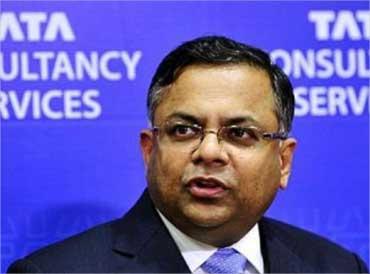

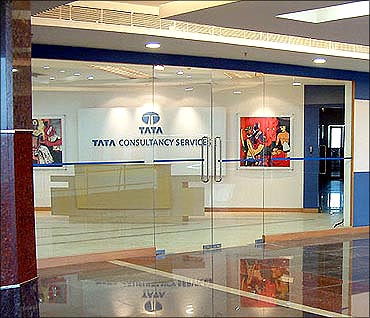
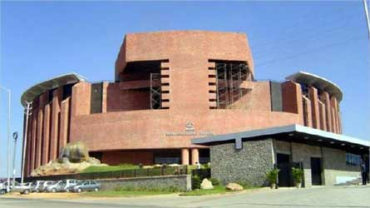
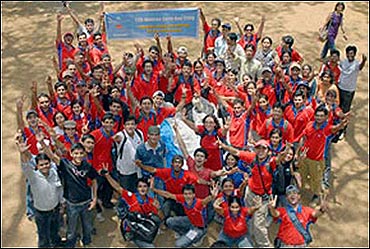



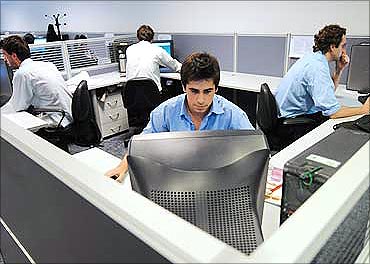


article